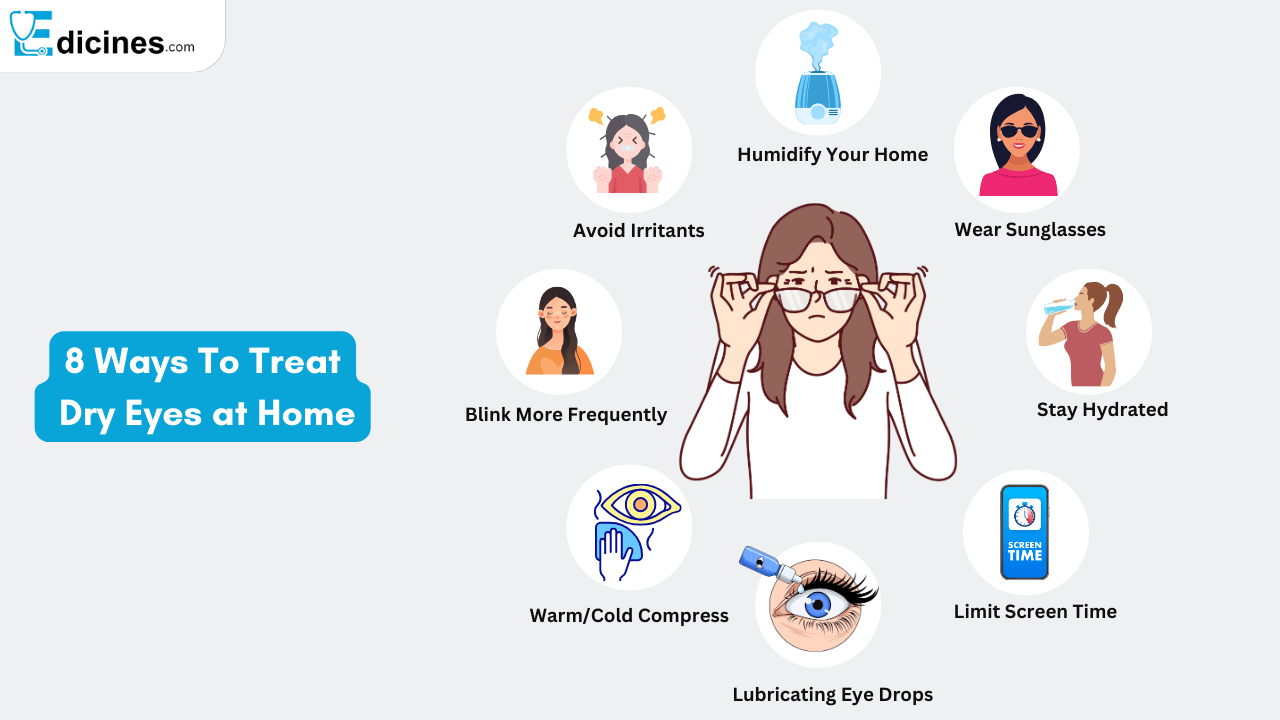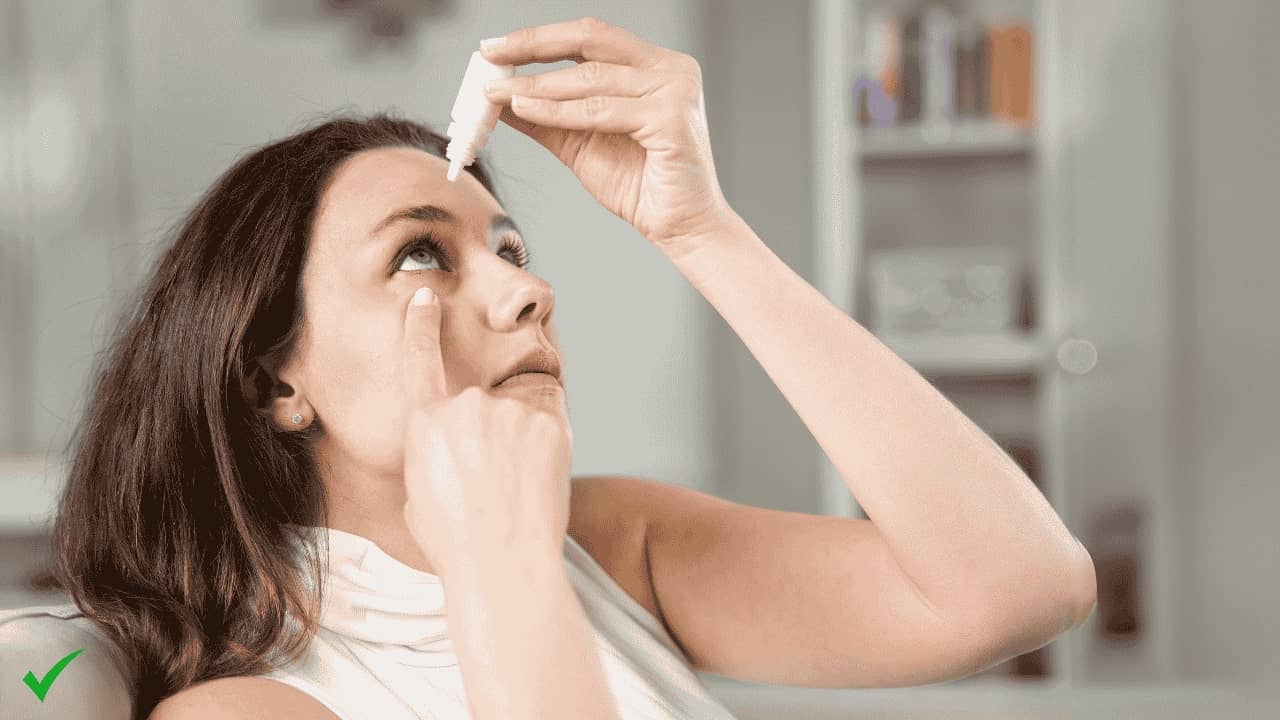Dry Eye Syndrome (DES), also known as keratoconjunctivitis sicca, is an eye disorder caused by insufficient tear production or excessive tear evaporation. This lack of lubrication leads to dryness, irritation, and inflammation, causing discomfort and potentially damaging the eye’s surface structures.
DES can also significantly impact vision, making it challenging to read or use computers regularly.
It’s important to note that ICD-10 H04.123 refers to aqueous tear deficiency, a related condition but not specifically dry eye syndrome.
Prevalence and Impact on Daily Life
Dry Eye Syndrome (DES) is a significant global health issue affecting millions of individuals, especially the elderly. Untreated DES can cause complications that hamper day-to-day activities such as driving or reading since it is an increasingly progressive condition.
The continuous sensation of itching can hinder concentration, lowering work output for those sitting at desks for long periods without proper eye care. Such people also find it hard to engage in other hobbies like painting, knitting, or any activity requiring sustained concentration.
Also Read: Computer Vision Syndrome: Causes, Symptoms, and Effective Treatments
Causes of Dry Eye Syndrome
Natural aging process and hormonal alterations
As we age, our bodies naturally produce fewer tears. These changes are particularly noticeable during menopause in women, when hormonal fluctuations can further reduce tear production, leading to drier eyes.
Tear production typically begins to decline after the age of 40. During menopause, women often experience a decrease in both the quantity and quality of their tears, leading to increased dryness in the eyes.
Environmental factors
Some environmental factors lead to DES especially through lifestyle choices associated with advancement in technology today.
Screen Exposure: An excessive time looking at computer screens or phones decreases blink rates thus affecting distribution of tears across eyeball surfaces over these devices being used constantly by people.
Contact Lenses: Long-term use of these lenses leads to insufficient tear production in eyes thus causing dryness.
Environmental Conditions: The wind, humid air, pollution in air or cigarette smoke can make tears dry up quickly as a result it exacerbates the symptoms of dryness.
Medical Conditions
There are several medical conditions that cause or make dry eye worse:
Such as autoimmune diseases that disrupt moisture production such as Sjogren’s syndrome, systemic lupus erythematosus and rheumatoid arthritis leads to persistent excessive dryness of eyes; Diabetes impairs tear glands resulting in less tear output hence who suffers are more likely to be having DES issues.
Postoperative Causes
After LASIK or cataract eye surgeries, one may experience temporary or even permanent dry eyes after surgery due to the effect on corneal nerves involved in tear production.
Alcohol ingestion
The body becomes dehydrated as a result of frequent drinking, worsening dry eye symptoms due to reduced tear production.
Symptoms of Dry Eye Syndrome

Common Symptoms
Dry Eye Syndrome can have a number of symptoms, which may worsen if not immediately attended to:
Dryness and Irritation: The feeling of dryness or grittiness in the front part of your eyes that does not go away easily.
Blurry Vision: Vision might change from time to time especially after long hours of focus such as when reading or doing some work on a computer.
Burning Sensation: This is characterized by stinging pain that intensifies with air conditioners, wind or smoke.
Symptoms After LASIK and PRK
After LASIK or PRK surgery for the eyes, dry eye symptoms are common among most patients due to temporary severance from corneal nerves which usually improve with time but may also need treatment.
Blepharitis and Dry Eye Syndrome
Blepharitis, an inflammation of the eyelids, often overlaps with dry eye syndrome. This condition causes redness, swelling, and debris build-up along the eyelids, further worsening the symptoms of dry eye.
Risk Factors and Associated Conditions
Dry Eye Syndrome of Autoimmunity
Autoimmune disorders like Sjogren’s syndrome, fibromyalgia, and lupus increase an individual’s vulnerability to dry eyes. This is because they interfere with the body’s ability to produce moisture, making it difficult for the eyes to stay lubricated.
Diabetes Mellitus and Dry Eye Syndrome
Secondly, diabetes is a significant risk factor for DES since high blood sugars can damage the nerves behind the eyes which will affect tearing thus causing dryness.
Contact lenses and Dry Eye
Prolonged use of contact lenses can reduce oxygen flow to cornea leading to eye irritation and worsened symptoms of dry eye syndrome
Military-Related Exposures
Veterans who have been exposed to burn pits and other environmental toxins during military service may develop dry eye syndrome. In such cases, the VA rating for bilateral dry eye syndrome can determine compensation for affected veterans.
Diagnosis and Medical Classification

Diagnostic Tests
Schirmer Test: A small paper strip is put beneath the eyelid in order to evaluate the quantity of tears produced.
Tear Break-Up Time (TBUT): The function of this test is to measure how much time it takes for tears to evaporate after one has blinked, so as to determine the tear stability.
Severity Classification
Mild: Have symptoms that are not often, thus can be treated with OTC eye drops.
Moderate: Such individuals may need prescriptions for their symptoms occurring more frequently.
Severe: The symptoms are very constant thus affect life quality greatly and require advanced management such as punctal plugs or other drugs.
Medical Terminology and VA Proportion
Keratoconjunctivitis sicca is the medical term used for dry eye syndrome. Veterans who have experience in bilateral dry eyes syndrome might be eligible to get a rating from VA depending on how severe their symptoms are.
Latest Treatment for Dry Eye Syndrome
Artificial Tear Drops
Usually, over-the-counter general use of artificial tears is the most frequent treatment for dry eye syndrome. Regular use of preservative-laden formulas is often suggested to avoid irritation.
Medicines Prescribed
Restasis (cyclosporine) and Xiidra (lifitegrast) are examples of medicines that help to prevent inflammation while increasing tear production in more severe cases.
Punctal Plugs
Punctal plugs are little devices put inside your tear ducts that prevent the drainage from your eyes keeping them moist for longer.
2024 Advanced Treatments
Eye drops formulations that provide longer relief have been made available in 2024. Azithromycin eye drops are also getting utilized for the treatment of meibomian gland dysfunction, which is a common cause of DES.
Other Treatment Options
Some of the alternative treatment methods like acupuncture as well as acupressure have been found to help relieve dry eyes by stimulating certain pressure points aimed at increasing tear production.
Self-Care and Home Remedies
Warm Compresses and Eyelid Hygiene
The use of a warm compress over the eyes helps in promoting tear generation. Besides, washing the eyelids with diluted baby shampoo can alleviate swelling and deposit content.
Nutrition and Supplements
The intake of omega-3s found in fish oil or flaxseed oil improves tear quality while curbing inflammation within the eyes.
Foods to Help Dry Eye Syndrome
Consuming foods rich in omega-3 fatty acids and vitamins A, C, and E can support eye health. It’s advisable to limit or avoid excessive intake of alcohol and processed foods, as these can contribute to dehydration and potentially negatively impact eye health.
Eye Exercises
Engaging in simple activities like focusing on distant objects can help reduce eye strain and prevent dry eye syndrome.
Managing Dry Eye Syndrome with Lifestyle Changes
Avoiding Triggers
Limit your screen time and follow the 20-20-20 rule that is view objects 20 feet away for 20 seconds every 20 minutes to ease the strain in the eyes.
Contact Lens Solutions
Preserve moisture by using contact lenses or use glasses frequently to prevent dryness.
Safe Makeup for Dry Eyes
Use hypoallergenic mascara and cream for the eyes especially for the sensitive ones so as to prevent further irritation.
Dry Eye Syndrome After Surgery
Causes and Management
Immediately after LASIK and cataract surgery, corneal nerves which are responsible for tear production may be temporarily disrupted thus causing occurrence of dry eyes. Generally this condition tends to improve with time however it may require continuous treatment.
Special Care for Post-Surgical Patients
Patients should use preservative-free artificial tears regularly and avoid screen use immediately after surgery to allow the eyes to recover.
Alternative Treatments and Holistic Approaches
Homeopathy
People with dry eyes may use homeopathic eye drops and herbal tea as alternatives to artificial tears. Even though they have not been researched as widely as traditional medications, many people believe that they work.
Acupressure and Yoga
The application of acupressure at certain points can increase the amount of tears produced, while yoga is known to prevent stress, which causes dryness of the eyes.
Prognosis and Long-Term Management
Is There a Cure for Dry Eye Syndrome?
Dry Eye Syndrome can sometimes be treated although it’s not always possible to cure it; but if the correct treatment plan is established, then patients will live comfortably despite their condition.
Might Dry Eye syndrome at times cease existing?
In certain instances where there was an operation done on the eye such as LASIK, symptoms tend to reduce with time. Nevertheless, people who have chronic dry eyes may need to manage them for a longer period.
Managing extensive dry eyes
The treatment of severe dry eyes may involve punctal plugs, prescription medicines or more so for surgical treatment to stimulate the tear production, improving the quality of life of these patients.
Conclusion
Considering that dry eye syndrome is a common condition but it can have profound effects in one’s day-to-day activities, it necessitates promptness in terms of its diagnosis and personalized care so as not to let it go too far off track. This can be done using any range of treatments from easy over-the-counter solutions to highly complex prescription options.













